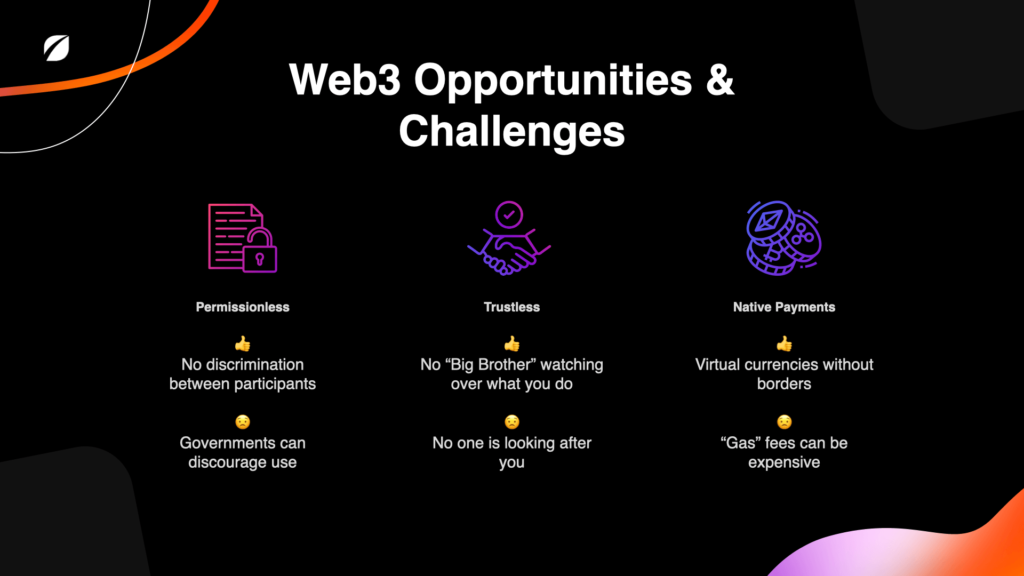Article
What are the opportunities and challenges of Web3?

What are the opportunities and challenges of Web3?
The fundamental vision of Web3 stands on the decentralization of power and ownership of digital assets. It is permissionless, trustless, and has a native payment structure that opens up opportunities for borderless market innovations.
Let’s look at this scenario where you want to buy a limited copy of digital art (an NFT) from an artist who lives in another country. Applying the key Web3 concepts above…
- Web3 is permissionless: You can enter into an agreement directly with an artist without a third-party having to approve the transaction.
- Web3 is trustless: Once the transaction is complete with a transparent and verifiable record, no one has ability to alter the contract.
- Web3 allows for native payments: You use the native currency of the blockchain (aka cryptocurrency) as a form of payment, instead of using a third-party wire service to move money from your local bank to another bank in another country.
Web3 is not without its challenges, however…
- While the technology does not discriminate against you, your local government and institutions can. They can levy a heavy tax on you or outright ban the use of cryptocurrencies in order to protect their national interests.
- While there is no “Big Brother” watching over you, there is also no one looking after you. You need to educate yourself and understand the risks involved in entering these agreements. Do not trust strangers who approach you with the promise of wealth at no cost.
- In many cases, the money you have in your bank is seed funding for your cryptocurrency. If you are not rich in the “real world”, you may not be able to afford the “gas” fee associated with transaction. The good news is that in the Ethereum Blockchain, for example, problems like these are actively being worked on to create a more accessible market.









